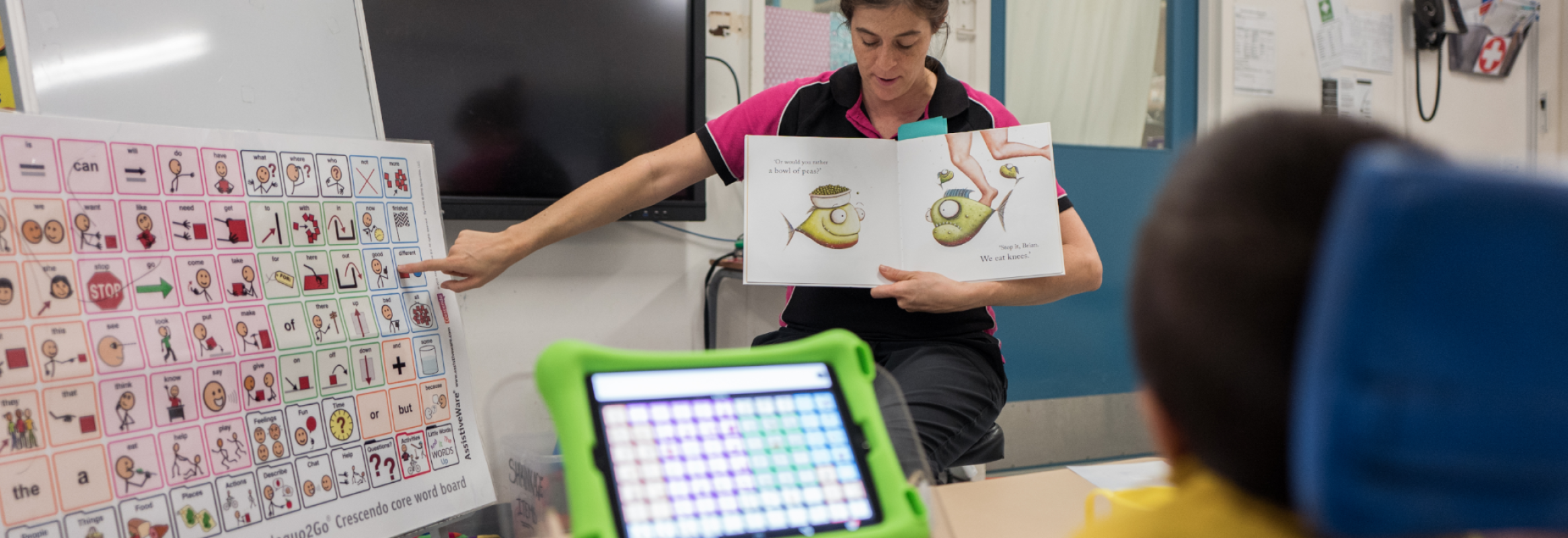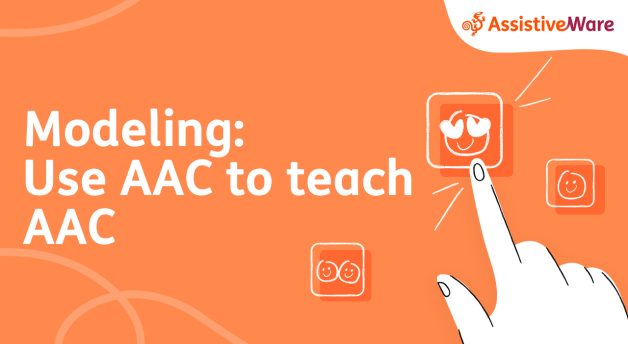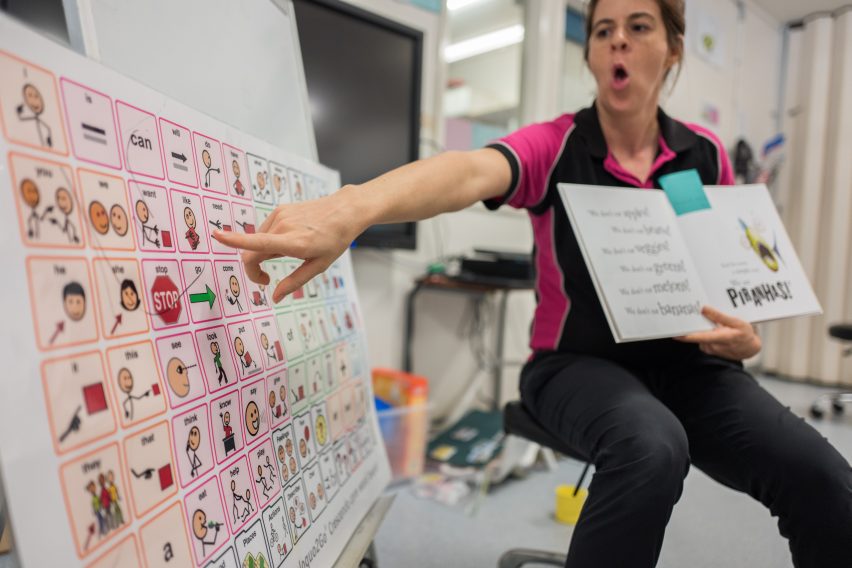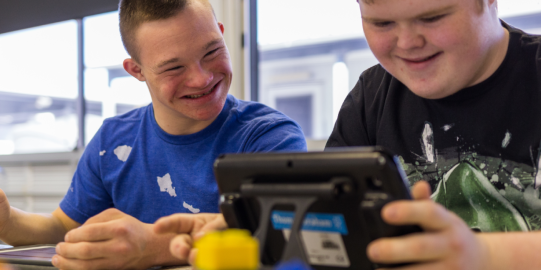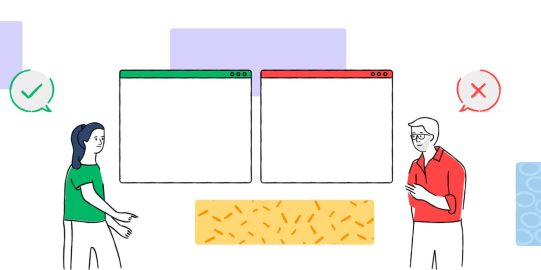If the AAC user allows, you can model on their system. Of course, it is best to model on a system that closely resembles the system the AAC user uses - that way, the user is seeing the same symbols and navigation they will need to use. However, it may not always be possible to use an identical system. You may be modeling for a class full of students using different systems. Or you may not be able to afford two of the same high tech system. In these cases, use what you have available, and follow up when possible on the AAC user’s own system. This may help him “map” what you’ve modeled on your system onto the location, so he can find it on his own system.
How many words do we model?
Typically, we match our modeling to the language level of the AAC user; meaning we model one or more words than the AAC user is currently using.
- If an AAC user is just starting out, they may not yet be using any words on the AAC system. Perhaps they have started pointing to one word at a time. For these AAC learners, you might model single words, with some 2-3 word sentences.
- For AAC users that are beginning to use 1-2 word combinations on their AAC system, try modeling 3-6 word sentences.
- Then for AAC users are already producing many different messages on their AAC system, we can model longer sentences. We can also show them how to join ideas or even model grammar and complex sentence structures.
What words do we model?
We can model both core and fringe words on our balanced AAC system. We can model specific or general words that will be powerful and effective for an AAC user, within an activity. We can model different words to help them communicate for different reasons. We must give AAC users the chance to learn the words to do more than request. We should model comments and thoughts, rather than just asking lots of questions.
It is most important to select words that are both meaningful and motivating to the AAC user. Model words and word combinations that will occur often, so there are many opportunities for the AAC user to see them modeled.
The AssistiveWare Core Word Classroom was developed to help teams find words that can be modeled across a variety of situations. Please join the classroom today for many useful ideas in the Core Word Planners on what words we can model.
Modeling in PODD
We also show words and language when modeling using PODD. There are specific strategies for how you can model with either a paper or digital PODD, using simPODD. Learn more about how you can use simPODD to talk together.
Modeling key words, not full sentences and grammar
When we start out, we don’t need to model every single word we say. We may not model the exact correct grammar.
Instead, we focus on modeling the key words in a sentence. We target the most important words needed to convey the meaning of the message. If I model this sentence : “ I GO SHOP GET BANANAS”, even though it is not grammatically complete, the general message of the sentence can be understood. Especially if I say it as I am telling my friend about my morning.
Key words is a powerful way to demonstrate how we start combining words to build sentences and language, without the demands of having to know the grammar. Unfortunately when we first start modeling, we can become worried about not demonstrating correct grammar.
Modeling key words before full grammatical sentences makes sense - this is how the AAC user will develop their language. They are likely to say and communicate to us in key words, before they start composing sentences, much the same as how all people develop language! In time and with more modeling, they can develop the ability for more precise grammar, as long as they have an AAC system that allows for this grammatical development.
Give a correct verbal model
When you are modeling on the AAC system, it is okay to use the AAC system to model 1-2 words (or however many are needed), while speaking the complete sentence aloud. For example, you could model on the AAC system “I go shop get bananas”, while saying “I went to the shops to get the bananas” with speech.
Model correct grammar
It is also okay to model the correct grammar at the right time for the AAC user. For example, if the AAC users says “I go shops” on their AAC system to talk about the weekend, then this may be a perfect opportunity to model. We can show how to use grammar supports to find the word “went”, or to model little words like “to” and “the” on the AAC system. Model "Really?; you went to the shops on the weekend!?".
Remember, you’re modeling the next step the AAC user needs to learn.
